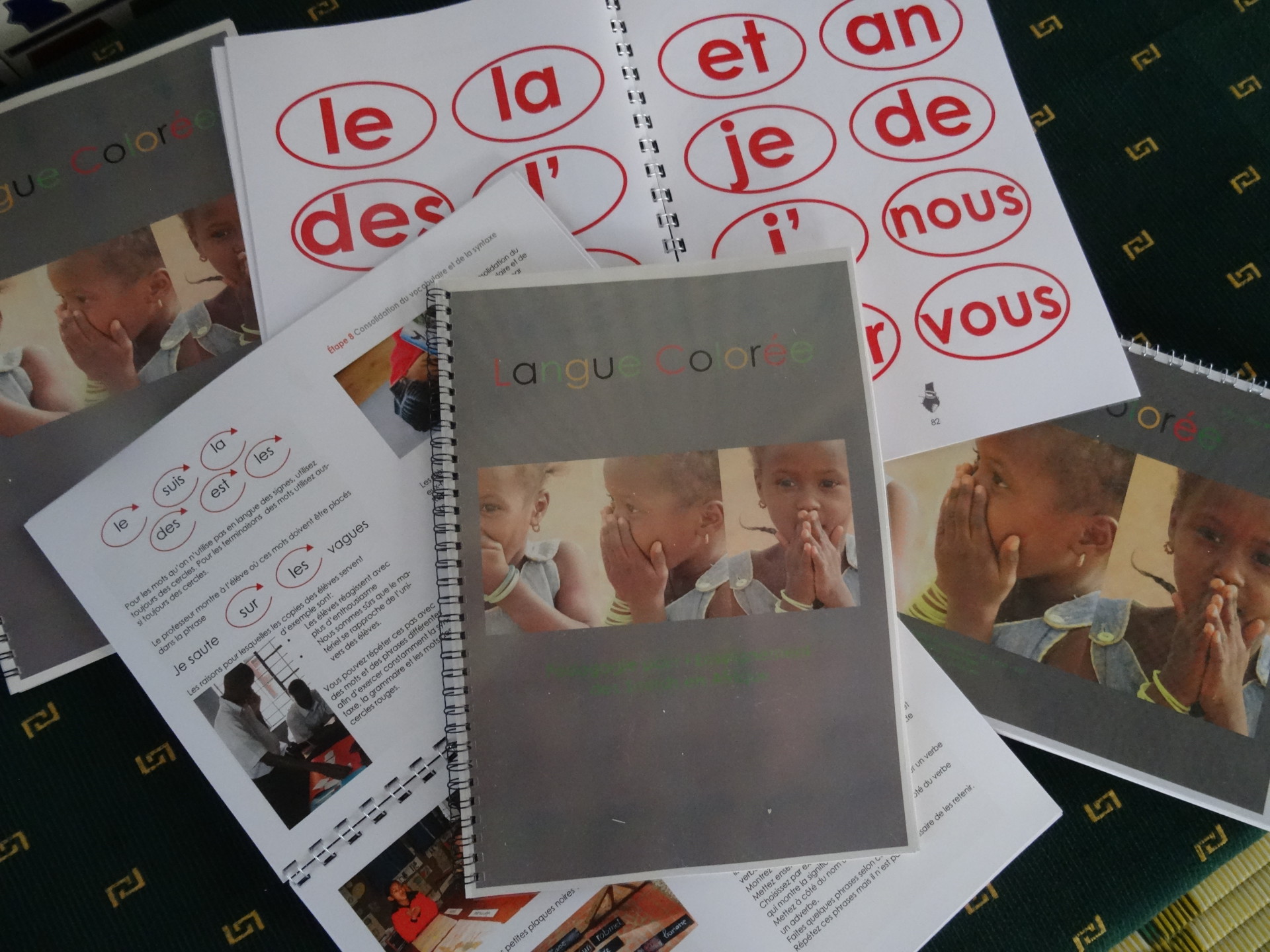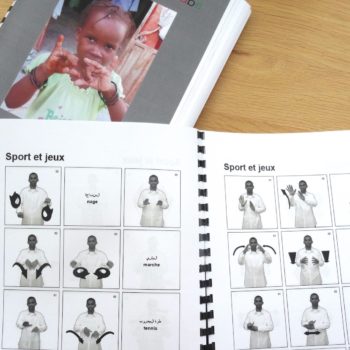Langue Colorée offers these study and teaching materials:
The books:
- Pedagogy (general and special for Deaf people in Africa)
- Visualization and Cercle Rouge (Red Circle, learning to read and write)
- Exercises
- Behavior by example
2 DVD’s en 2 sign language dictionaries with 1000 signs in 1) Arabic Sign language and 2) American Sign Language, and 1 DVD with 1000 pictograms, supplemented and partly modified in typical African signs adapted to culture and religion.
And a complete curriculum.
DeafNET, together with Silent Work, has put the signs for Mauritania and Senegal on DVD / video. An illustration:
Teachers and parents make most of the teaching materials for the children themselves. Each child is given an A4 blackboard and a couple of small boards on which they can draw and write.
The method is aimed at making it as simple as possible for deaf children to learn to read and write with basic means – especially through visualisation. Mathematics and other subjects such as geography and history can also be given.
The teacher works on themes that are close to the child’s world of experience. For the first year, for example: introduction (who am I and who are you), family, village or district, school, rainy season, eating and drinking. These topics come back in the following years and then the vocabulary is expanded. Each time a picture is combined with a gesture and a word. For each theme, the children start drawing and the teacher tells a story in sign language. The children learn the words that appear in their own drawing.
The visualisation of the lessons and the playing out of the situations by the children is of enormous importance. This way, the children can learn without having experienced the situation. It triggers their interest and imagination, which makes learning fun for deaf children as well.
You have to imagine that deaf children in Africa often attend school much later – sometimes at the age of 12 – and do not see and learn much from the wider environment. After all, they don’t hear the stories of brothers, sisters, parents and friends either.
When deaf children then learn signs at school, it demands a lot from their concentration. They have to learn to understand the signs and facial expressions unknown to them, and so they have to be constantly focused on them. Look away for a moment and they miss the information. They listen with their eyes and speak with their hands.
That’s why visualisation and humour are all the more important. It makes it more interesting for them and that’s how they come to learn!






